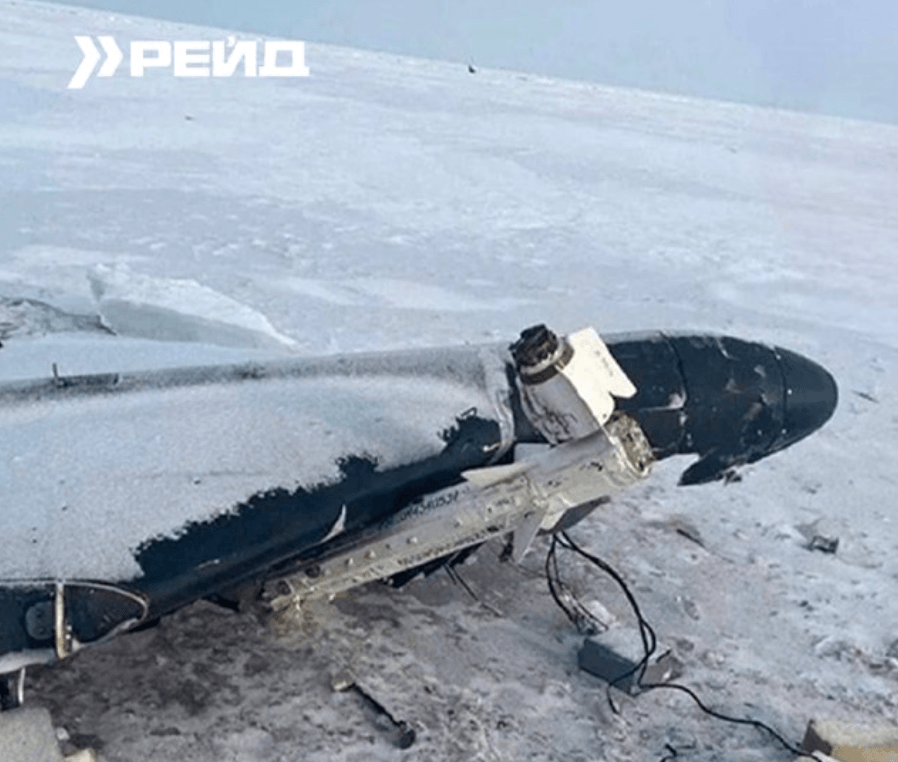We asked weapons experts to review Ukraine's two new drone innovations

It's been a bumper week for deadly drone innovation, with Ukraine's Armed Forces revealing two new developments in the technological field that continues to redefine the boundaries of modern warfare.
The first emerged on Sept. 2, when videos began circulating on social media of a drone spraying what appeared to be fiery, white-hot metal on a treeline in an undisclosed part of the battlefield. No troops are visible in the video.
On Sept. 4, Ukraine's Defense Ministry confirmed its forces were behind the so-called "dragon drones," and since then, more videos have surfaced.
Ukrainian thermite dropping drones continue to rapidly proliferate through various drone units.
— OSINTtechnical (@Osinttechnical) September 4, 2024
Seen here, a Ukrainian drone from the 60th Mechanized Brigade drops a stream of molten thermite on a Russian-held treeline. pic.twitter.com/o20diLuN1L
It's not been confirmed exactly what type of munition the drones use, but a number of reports suggest they are equipped with thermite, dispersing thousands of tiny pieces of molten metal burning at temperatures that exceed 2,000 degrees Celsius.
Human Rights Watch writes that being exposed to such munitions can lead to "extensive and excruciating burns that require painful treatment" that include "respiratory damage from inflamed airways and toxic fumes, infection, extreme dehydration, and organ failure."
The second innovation surfaced in a video released by the Wild Hornets, a volunteer group that fundraises for, and manufactures FPV drones for Ukraine's armed forces.
In comparison to the “dragon drone,” this one was far more basic – an AK-74 strapped to a drone.
Our military continues to develop the Hornet Queen equipped with automatic weapons 🐝👌
— Wild Hornets (@wilendhornets) September 4, 2024
This time, the first combat deployment was carried out—targeting a position with russian forces.
This test indicated the direction in which this project should move forward 🚀
If you also… pic.twitter.com/lYgM4zqhMD
We asked three weapons experts to give their takes on the two new systems..
The Dragon Drone
Matthew Moss, small arms historian and co-founder of The Armourer's Bench
"I think the thermite drones are the more impactful of the two new drones.
"They have the ability to defoliate large areas and destroy Russian concealment and cover. It seems the drones are active in many of the major sectors which might indicate some centralized effort to develop and deploy them.
"With the autumn fast approaching it makes sense for Ukraine to deploy them now while conditions in the field are still favorable with lots of dry grass and foliage around.
"While thermite burns incredibly hotly, once the wetter weather arrives the fires they cause won't spread as easily."
Martin J. Dougherty, weapons expert and author of Aircraft, Tanks and Artillery of the Ukraine War
"The thermite delivery drone may be an effective force-multiplier, driving enemy forces from their positions, denying areas or creating clouds of smoke in areas that would otherwise be difficult to cover."
Samuel Bendett, drone expert, and advisor for the Center for Naval Analyses.
"I know Russians are freaking out right now on social media about this Ukrainian drone, seems like they were taken by surprise, and they're lamenting that once again Ukrainians have seized the innovation initiative and unveiled something quite dangerous.
"I do think once the weather changes, in the fall and the winter there won't be foliage to begin with, but right now as long as there's foliage that allows soldiers to hide under it, to place equipment under, to establish positions, storage facilities, this drone could be quite dangerous.
"Judging from the few videos we have, it doesn't fly very high, so it could be vulnerable to counter fire, assuming someone's close enough to take it down.
"But again, it is a highly innovative solution because forests and trees are a natural friend to soldiers, and taking out that cover is important.
"But it's a highly combustible drone, and I'm assuming if it gets hit it's going to up in a massive flash.
"I'm assuming at some point the Russians will come up with countermeasures or their own copy."

The AK-47 drone
Matthew Moss
"The gun-armed drone is really interesting because while it seems like a great idea, I think the reason we haven't seen more of them is because using drones to drop munitions is just more effective.
"It's quite difficult to aim the firearm with the drone's camera and the drone has limited ammunition before it has to return and have the rifle reloaded.
"There may be situations when a gun-armed drone is useful but by and large dropping munitions is usually a more effective use of a drone sortie."
Martin J. Dougherty
"It is questionable how effective a rifle-caliber weapon on a small drone can be.
The recoil effects are likely to be considerable."
Samuel Bendett
"The AK-47 doesn't have a very long range, so you would have to be in relative proximity to your targets in order to do that.
"This could be another additional element to impact forces on the ground, to force them to move, to flush them out of a specific location to hit their positions, whether it be soldiers or vehicles.
"And it doesn't have to be precise to be lethal.
"Precise fire could also damage other drones so this could be quite significant – this drone flying close to a fixed-wing Russian intelligence, surveillance and reconnaissance drone for example, could just demolish it from close range."













